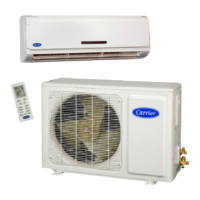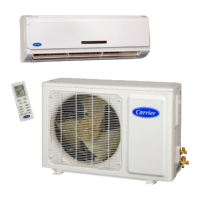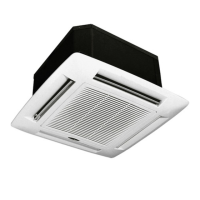31
5. Overload and high discharge temperature malfunction
Main detection points:
S Is the electronic expansion valve connected to the board?
S Is the electronic expansion valve damaged?
S Do you have a refrigerant leak?
S Is the compressor overload protection terminal connected
to the mainboard?
S Is the overload protector damaged?
S Is the heat exchange plugged or cracked?
S Is the heat exchanger dirty?
S Is the ambient temperature too high?
S Is there a malfunction in the discharge temperature
sensor?
Yes
Y
Y
Y
Y
H3 or E4 is displayed
30min after power off the unit
If the overload protector SAT
is well connected?
Under ambient temperature,
test the resistance of overload protector with ohmmeter;
resistance value should be<1000ohm
Is the plug connecting the EEV to the
control board connected securely?
Replace EEV coil of electronic expansion valve
Check the refrigerant; if there is leakage, charge
the refrigerant according to the service manual
Compressor overload protection terminal is not
connected with the mainboard; reconnect
them correctly
Heat exchange of unit is not good (heat exchanger
is dirty. Clean the heat exchanger
Ambient temperature is too high. Unit turns on
when the ambient temperature lowers.
Is the malfunction
eliminated?
Is the malfunction
eliminated?
Is the malfunction
eliminated?
Is the malfunction
eliminated?
Is the malfunction
eliminated?
Replace outdoor
mainboard AP1
End
Replace overload
protector SAT
Connect wire
according to wiring
diagram
Yes
Yes
Yes
Yes
Yes
Yes
Yes
No
No
No
No
No
No
No
No
Fig. 34 – Troubleshooting

